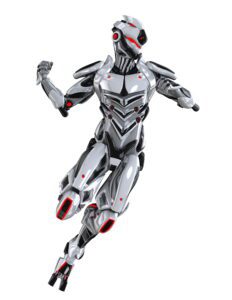For above-knee amputees, walking with a gait akin to biological limb functionality may require a number of physical therapy sessions.
“Generally, the higher the amputation level, the more we can expect to see gait deviations, or what some would call limps,” according to the Amputee Coalition. “This is because with each segment of the anatomy that is lost to amputation, more muscle, sensory receptors and leverage are also lost. As a result, the person with a higher amputation level typically has a less stable and less energy-efficient gait pattern compared to a person with a lower amputation level.”
To mitigate problems amputees face with leg prostheses, Carnegie Mellon Univ. researchers are developing a robotic leg capable of recovering balance and producing stable walking gaits.
“Powered prostheses can help compensate for missing leg muscles, but if amputees are afraid of falling down, they won’t use them,” said Hartmut Geyer, an assistant professor of robotics. “Today’s prosthetics try to mimic natural leg motion, yet they can’t respond like a healthy human leg would to trips, stumbles and pushes. Our work is motivated by the idea that if we understand how humans control their limbs, we can use those principles to control robotic limbs.”
Powered prosthetics are outfitted with motors capable of adjusting knee and ankle angles during walking. Additionally, the device generates force, making usage less physically straining.
The research is funded as part of a $900,000 National Robotics Initiative from the National Science Foundation.
Geyer’s research team is joined by Steve Collins, an associate professor of mechanical engineering and robotics, and Santiago Munoz, a prosthetist orthotist and instructor at Univ. of Pittsburgh’s Dept. of Rehabilitation Science and Technology. The research is funded through the next three years.
In his research, Geyer has focused on the important role of leg extensor muscles, which generally straighten joints. “The force feedback from these muscles automatically responds to ground disturbances, quickly slowing leg movement or extending the leg further,” according to Carnegie Mellon Univ.
Based on evaluations using computer simulations and a device called the Robotic Neuromuscular Leg 2, the team discovered incorporating the neuromuscular control scheme into the device allows it to effectively respond to disturbances when the leg begins to swing forward and late in the swing. However, the team still faces problems for disturbances at mid-swing.
A paper on the research is forthcoming in IEEE Transactions in Biomedical Engineering.
For the nearly 2 million amputees in the U.S., prosthetics may provide some semblance of a lost limb. But with advances in technology, there may soon come a day when the only difference between a biological and robotic limb is simply the parts within.
Read More – Source: Robotic Legs Take Cues from Humans
by: Greg Watry, Digital Reporter
